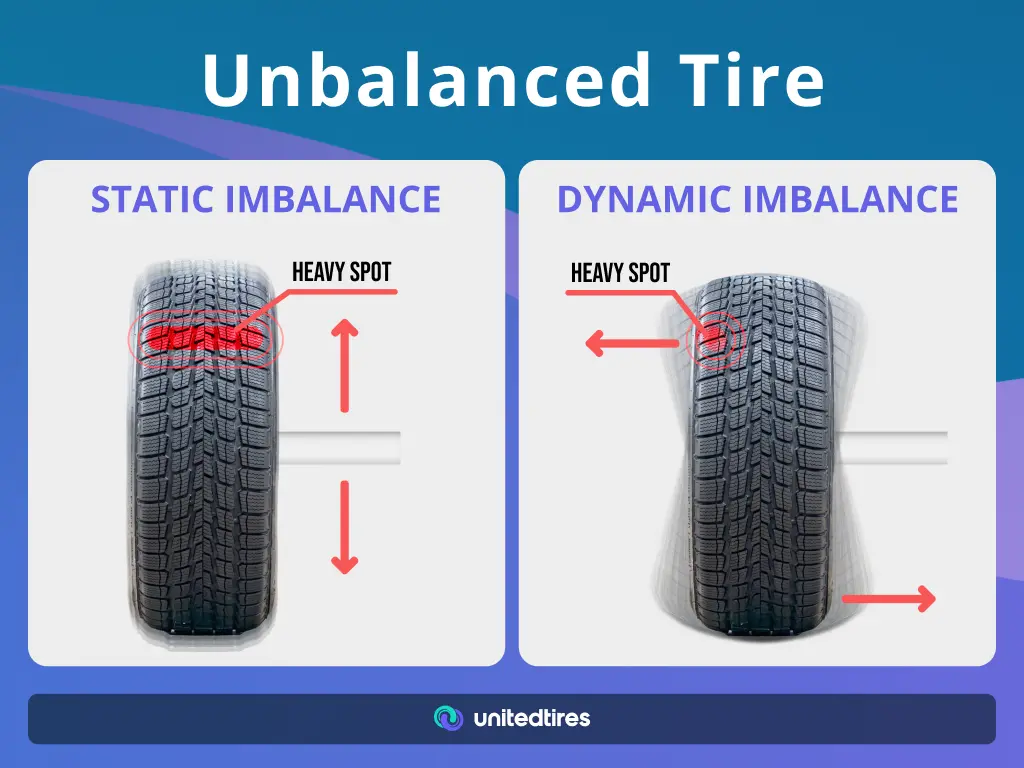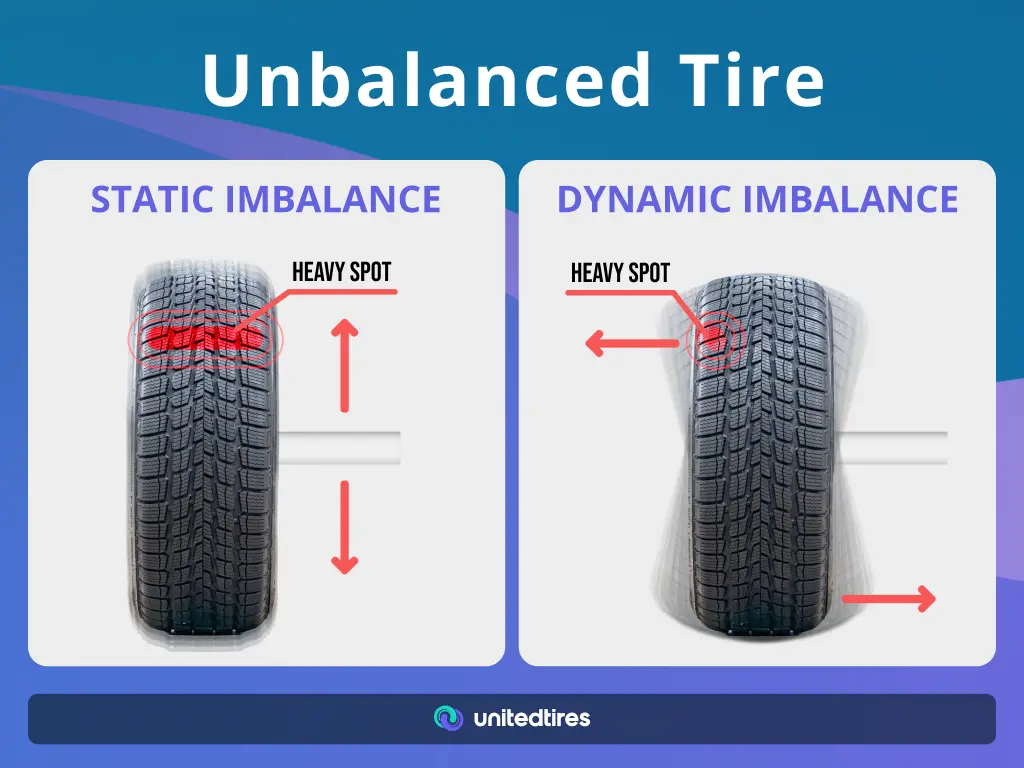Many drivers are shocked when they learn that tire cupping can prematurely wear out their tires, often within just a few thousand miles. This uneven tire wear is more than just an inconvenience; it can be a significant safety hazard. Understanding the causes can help mitigate this risk and ensure smoother rides.
Tire cupping is primarily caused by issues such as improper wheel alignment, worn-out suspension components, and unbalanced tires. Historically, studies have shown that vehicles with poorly maintained suspension systems are up to 50% more likely to experience tire cupping. Ensuring regular vehicle maintenance and prompt repairs is essential to prevent this uneven wear and extend the life of your tires.

What causes tire cupping?
Tire cupping is often caused by a combination of factors that lead to uneven wear on the tire’s surface. One major cause is improper wheel alignment, where the tires are not aligned correctly. This misalignment makes the tire tread wear unevenly. Over time, it results in a wavy pattern on the tire. Driving with misaligned wheels can be dangerous and costly.
Another significant cause is failing suspension components. If parts like shocks or struts are worn out, they can’t absorb road impacts effectively. This leads to oscillation, which creates those cupped patterns on the tread. It’s essential for vehicle safety to replace worn suspension parts promptly. Ignoring them can worsen the problem.
Unbalanced tires also contribute to tire cupping. When tires are out of balance, they don’t rotate evenly. This causes certain spots of the tire to wear out faster. Tire balancing and regular rotation can help distribute wear more evenly. It maintains tire health and improves vehicle handling.
Lastly, driving habits can affect how quickly tire cupping occurs. Hard braking, aggressive acceleration, and constant speeding can lead to uneven wear. Regular maintenance checks are recommended to catch these issues early. This preventive approach can save you money and enhance driving safety.
Overview of Tire Cupping and Its Implications
Tire cupping, also called tire scalloping, is a type of irregular wear pattern that appears on the tread of tires. It causes the tire surface to develop a series of high and low points. These create a wavy appearance. This wear is often surprising and frustrating for vehicle owners. The uneven surface impacts vehicle performance significantly.
One of the main implications of tire cupping is the reduction in vehicle safety. The irregular tread wear can cause tires to lose traction. This may lead to accidents, especially in adverse weather conditions. Additionally, drivers might notice increased road noise and vibration. These symptoms can make for an uncomfortable and unsafe driving experience.
The financial impact of tire cupping shouldn’t be overlooked either. Tires with severe cupping patterns need to be replaced sooner. This leads to increased costs for vehicle owners. Regular maintenance can help avoid these expensive replacements. It’s crucial to address the root causes of the cupping.
Ignoring tire cupping can also affect other parts of the vehicle. Poorly maintained tires can damage suspension components and alignment. This creates a cycle of wear and tear. Regular tire inspections and addressing issues promptly can prevent further problems. In the long run, it’s more cost-effective and safer.
The Role of Vehicle Alignment in Tire Cupping
Vehicle alignment is crucial in preventing tire cupping, as proper alignment ensures even distribution of weight across the tires. Misaligned wheels cause uneven wear, leading to the development of high and low points on the tire surface. This uneven wear pattern can create small dips, known as cupping. Drivers might notice this issue through increased road noise or vibration. It’s often a sign that alignment needs to be checked.
Three main angles are checked during alignment: camber, toe, and caster. Camber refers to the tilt of the tire, toe indicates the direction the tires point, and caster affects steering stability. If any of these angles are off, it can contribute to tire cupping. Mechanics use specialized equipment to adjust these angles. Regular alignment checks can prevent these issues and extend tire life.
Another aspect of alignment that affects tire wear is thrust angle alignment. This involves aligning all four wheels so that they are parallel and pointing straight. Misalignment here can also cause irregular wear patterns. Proper thrust angle alignment helps ensure that the vehicle drives straight. Regular checks are vital for maintaining correct alignment.
Maintaining proper alignment goes beyond preventing tire cupping. It also improves fuel efficiency and ensures a smoother ride. Misaligned wheels make the engine work harder. This increases fuel consumption. Regular alignment checks are a small investment that offers substantial benefits.
Impact of Worn Suspension Components
Worn suspension components play a significant role in causing tire cupping. Suspension parts like shocks and struts absorb the impact of the road. When they wear out, they fail to protect the tires effectively. The result is bouncing and oscillation. This repeated motion causes uneven tire wear patterns, including cupping.
One common symptom of worn suspension is an increase in vehicle vibrations. Drivers may feel these vibrations through the steering wheel or seat. It can make for an uncomfortable ride. Additionally, this vibration contributes to uneven tire wear. The sooner suspension issues are addressed, the better.
Worn suspension components can also affect overall vehicle handling. Poorly functioning shocks and struts reduce stability. This impacts the vehicle’s ability to corner and brake effectively. Not only does this lead to tire cupping, but it also compromises safety. Prompt maintenance can prevent these dangerous situations.
Regular suspension inspections and timely repairs are crucial. Mechanic checks can identify wear early. Replacing worn shocks or struts helps maintain tire health. This preventative measure avoids costly tire replacements. It’s a small price to pay for safety and comfort.
The impact isn’t limited to tires; it affects other car parts too. Poor suspension can strain the vehicle’s frame. This can lead to more extensive and expensive repairs. Maintaining the suspension system prolongs the vehicle’s overall lifespan. It ensures smoother, more controlled rides.
Importance of Tire Balancing and Rotation
Regular tire balancing and rotation are essential for maintaining even tire wear. Balancing ensures each wheel rotates smoothly without causing vibrations. This process involves attaching small weights to the wheels to distribute weight evenly. Without balancing, tires can wear unevenly. This uneven wear leads to problems like tire cupping.
Tire rotation also plays a critical role in tire maintenance. Rotating tires means switching their positions on the vehicle. This helps distribute wear more evenly across all four tires. Different axle positions bear different loads. Regular rotation helps even out this stress.
Neglecting tire balancing and rotation can have several negative consequences. Unbalanced tires can affect vehicle handling. This makes driving less safe and comfortable. Unevenly worn tires may also reduce fuel efficiency. Proper maintenance can prevent these issues.
Many experts recommend balancing and rotating tires every 6,000 to 8,000 miles. Checking with your vehicle’s manual is always a good idea. Consistent maintenance schedules ensure your tires last longer. This also saves money in the long run. Balancing and rotation enhance tire performance.
Another benefit of regular tire maintenance is improved driving safety. Balanced tires provide better traction. This is especially critical in adverse weather conditions. Regular checks can identify issues early. Prompt action ensures a safer ride.
Lastly, tire balancing and rotation can extend the lifespan of other vehicle components. Even tire wear minimizes strain on the suspension and alignment. This helps prolong their functionality. Regular maintenance contributes to a smoother, more reliable driving experience. It also reduces the likelihood of unexpected repairs.
Preventative Measures and Regular Maintenance
Consistent maintenance is essential for preventing tire cupping and other issues. Regularly checking tire pressure ensures they are properly inflated. Underinflated or overinflated tires can wear unevenly. This uneven wear makes cupping more likely. Keeping tires at the recommended pressure is a simple step toward prevention.
Inspecting your vehicle’s suspension system periodically is also crucial. Worn shocks and struts should be replaced promptly. This helps maintain a smooth ride and even tire wear. Suspension components that are in good shape reduce the risk of tire cupping. Regular inspections can catch wear early.
Wheel alignment checks should be part of your routine maintenance. Misaligned wheels contribute significantly to tire cupping. Ensuring your wheels are correctly aligned promotes even tire wear. It also enhances vehicle handling. Getting an alignment check with every tire rotation is a good practice.
Maintaining a regular tire rotation schedule distributes wear evenly. Rotating tires helps all four tires share the load equally. This is especially important for vehicles with differing loads on the front and back axles. Even wear extends the life of your tires. It also improves driving safety and comfort.
Regularly balancing your tires can prevent uneven tire wear. Unbalanced tires cause vibrations and lead to cupping. Getting tires balanced when rotating them is efficient. Balancing helps maintain even tire tread and smooth driving. This small step helps avoid bigger problems down the road.
Besides tire-specific maintenance, driving habits also matter. Avoiding hard braking and aggressive acceleration can reduce uneven tire wear. Gentle driving extends the life of your tires. Combined with regular checks, these habits ensure long-lasting tire health. They contribute significantly to overall vehicle maintenance.
Conclusion
Understanding the causes of tire cupping is crucial for maintaining vehicle safety and performance. Regular maintenance practices such as proper alignment, tire balancing, and rotation play a significant role. Additionally, keeping an eye on suspension components is essential. Addressing these factors can prevent uneven tire wear and enhance your driving experience.
Staying proactive with vehicle maintenance not only extends tire life but also ensures safety on the road. By adopting these preventative measures, costly repairs and unsafe driving conditions can be avoided. The importance of consistent checks and responsible driving habits cannot be overstated. It’s an investment in both your vehicle and your peace of mind.


Leave a Reply